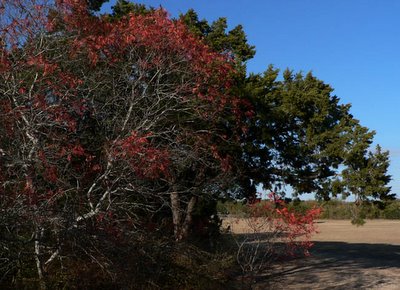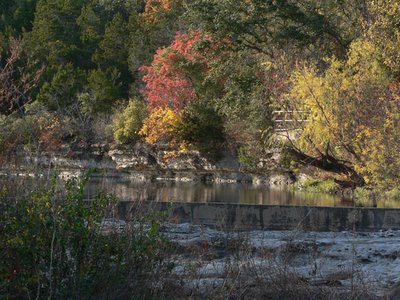Many people think we have no fall colors in Austin, but that's not true. Every once in a while you run across a local a tree or bush whose leaves turn at least a little bit red. Here are two kinds of sumac, one being poison ivy and the other a skunkbush sumac. The pointed leaves are the poison ivy.

A flameleaf sumac beside a juniper tree.

A small dam on Slaughter Creek, and (barely visible) either a flameleaf sumac, or else an oak locally called a "Spanish Oak", Q. Texana in the distance (I can't tell from the photo which it is--they both turn this color in the fall.)

Here I am sitting on a limestone ledge beside Slaughter Creek. My camera is propped up on a rock.

Junonia coenia or common buckeye butterfly, less faded than the one I had a photo of a few weeks ago. It has survived at least 2 or 3 mornings of freezing temperatures. I still have a surprising number of butterflies around my house, mostly small. This buckeye is a fairly big butterfly--a couple of inches from wingtip to wingtip.

Mourning dove. The bluish ring around the eye, usually hard to see, is easily visible (at least it is if you click to enlarge.)

No comments:
Post a Comment